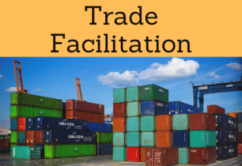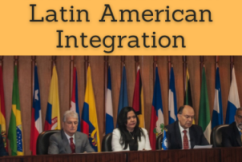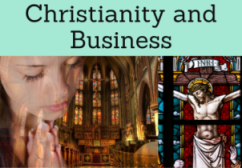Business in Cuba. Cuban Economy, Exports

Cuban Foreign Trade, Business in Havana. Santiago (Cuba)
- Introduction to the Republic of Cuba
- Business in Havana
- Cuban Economy
- Cuban Foreign Trade
- Business Opportunities in Cuba
- Access to the Cuban market
- Business Plan for Cuba
The objectives of the subject «Doing Business in Cuba» are the following:
- To analyze the Cuban Economy and Global Trade
- To explore the Business Opportunities in Cuba
- To analyze the trade relations of Cuba with the country of the student
- To know the Trade Agreements of Cuba
- To develop a business plan for the Cuban market

The Subject «Foreign Trade and Business in Cuba» belongs to the following Online Programs taught by EENI Global Business School:
Masters: International Business, Foreign Trade.
Doctorate: American Business, World Trade.

Credits of the Subject «Doing Business in Cuba»: 1


International Trade and Business in Cuba

Preferential Access and Trade Agreements of Cuba
- Cuba and the Caribbean Economic Area
- Association of Caribbean States
- Latin American Integration Association (ALADI)
-
ALBA
- Energy supply agreement with Venezuela (PetroCaribbean)
- SELA
- Mexico-Cuba Economic Complementation Agreement
- Partial scope agreement with Chile
- Partial scope agreement with Guatemala
- Trade Agreement with Panama
- Economic Complementation Agreement with Peru
- Trade Agreement with Qatar
- Agreement with the MERCOSUR
- El Salvador-Cuba Partial Scope Agreement
- Global System of Trade Preferences
- Eurasian Economic Union (EAEU) - Observer country

- WTO
- GATS
- Agreement on the Application of Sanitary Measures
- Agreement on Technical Barriers to Trade
- Agreement on Preshipment Inspection
- Agreement on Safeguards
- Trade Facilitation Agreement
- WCO
- BIC (Containers)
- Chicago Convention (ICAO)
- IMO
- Customs Convention on Containers
- International Civil Aviation Organization (ICAO)
- Organization for Cooperation between Railways (OSJD)
The International Air Transport Association (IATA) was created in Havana in 1945.

- CELAC
- OAS
- ECLAC
- FEALAC

- WTO
- WIPO
- UN
- UNCTAD
Cuba is not a member of:
- IMF
- WB
- Cuban Capital: Havana
- Cuban Provinces: Pinar del Río, Artemisa, Havana, Mayabeque, Matanzas, Cienfuegos, Villa Clara, Sancti Spíritus, Ciego de Ávila, Camagüey, Las Tunas, Granma, Holguín, Santiago de Cuba, Guantánamo, and the Isle of Youth Special Municipality
- Largest cities: Santiago de Cuba, Camagüey, Holguín, Guantánamo, Santa Clara, Las Tunas, Bayamo, Manzanillo, Cienfuegos, Pinar del Río, Matanzas, Ciego de Ávila and Sancti Spíritus
- Cienfuegos is a World Heritage Site
- Cuba does not share land borders with any country (except the Guantánamo territory of the U.S.)
- Nearest countries to Cuba by sea: Bahamas, United States (Florida), Mexico, Cayman Islands, Haiti, Jamaica and the Dominican Republic
- Area of Cuba: 442 km²
- Population of Cuba: 11,200 de inhabitants;
- Cuban Population density: 102 inhabitants / km²
- 10% of the population has an African origin (African Diaspora), the rest are white and mulattoes
- Cuba has one of the highest rates of literacy, health coverage and life expectancy in all of Latin America (Iberian America)
- Cuba has a high human development index: 0.8
- Cuba has the third largest number of doctors per capita worldwide
- Official language of Cuba: Spanish
- Abolition of Slavery in Cuba: 1886
- Climate of Cuba: tropical
- 1492: discovery by the Spanish (Isla Juana)
- 1869: Spanish province
- 1898:
- Spanish-American war
- Independence from Spain (with Puerto Rico and Philippines)
- 1902: United States Protectorate
- 1952: Fulgencio Batista dictatorship
- 1959: Cuban revolution (Fidel Castro, Communist Party of Cuba)
- Government Type: Socialist State with single party
Main religion in Cuba:
- Christianity (Catholicism): 49 % of the Cuban population

Cuba belongs to the Caribbean Economic Area.

Cuban Economy.
- Cuba has a planned Economy based on the Stalinist-Marxist (communist) model
- Almost all the Cuban productive means are administered by the Cuban Government
- It is estimated that 75% of the workforce works for the Government
- There are an estimated 500,000 workers in the private sector
- Cuban GDP (PPP): 96,851 million dollars
- Cuban GDP per capita (PPP): 12,357 dollars
- Economic blockade by the U.S. (since 1959)
- Mariel Special Development Zone for attracting external investments oriented to export
- Cuba has important mineral resources, mainly nickel, copper and cobalt.
- Cuba has 34.4% of the world's nickel reserves
- The main Cuban economic activity is the sugar industry
- The tropical fruit sector (pineapple, guava, mamey, papaya) is important
- Significant production of coffee and manufactured tobacco (Cuban cigars)
- Important tourist sector
- 3.5 million tourists visit Cuba every year
- Main industries: petroleum, nickel, cobalt, pharmaceuticals, tobacco, construction, steel, cement, agricultural machinery, sugar
- Cuban currency: Cuban peso (CUP) and Cuban convertible peso (CUC)
- Country code top-level domain of Cuba: .cu

Cuban Foreign Trade
- Main Exports of Cuba: oil, nickel, medical products, sugar, tobacco, fish, citrus, coffee
- Main export markets of Cuba: Venezuela, Spain, Russia, Lebanon, Indonesia and Germany
- Main imports of Cuba: oil, food, machinery, chemicals
- Largest providers of Cuba: China, Spain, Russia, Brazil, Mexico, Italy and the U.S.

International Transport and Logistics in Cuba:
- 52.202 Kilometers of roads (17.212 km paved)
- 654 km of highways
- 8.193 Kilometers of railway lines
- International Airports: Havana, Varadero, Holguín and Santiago de Cuba
- Largest ports: Mariel, Moa, Cienfuegos, Havana and Matanza
(c) EENI Global Business School (1995-2024)
We do not use cookies
Top of this page



 (
(

